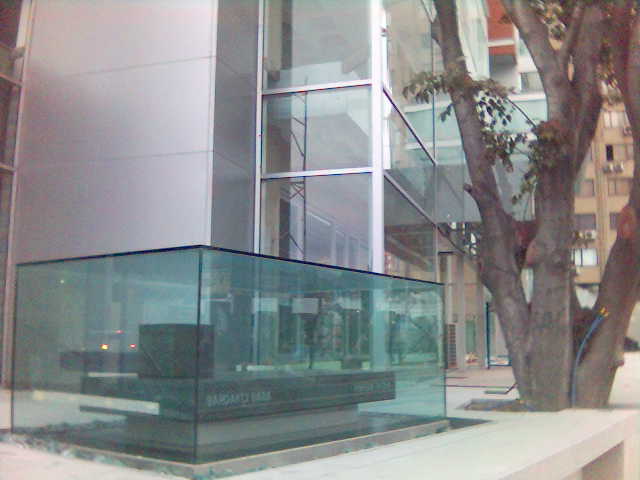Besiktas is one of 20 or so districts of Istanbul which boasts with an open-air exhibition of Ataturk photographs along the avenue in front of Ciragan Palace Hotel. I hope President of Iran Ahmadinejad had a chance to view these photographs on his way to Ciragan Palace Hotel during his visit to Istanbul a few weeks ago, who rejected a trip to Ankara and Ataturk Mosaleum, the usual custom for all heads of state and other dignitaries who come to Turkey.
Fulya is one of several Municipalities in Besiktas which is becoming an important centre with high rise apartments and business centres. One of these high rise apartments under construction has a turbeh right in front of its entrance, which is quite awkward although it has a modern look with a glass cover and marble walls (Attachment 1.) People of all ages stop by the Turbeh and pray, as they have done for many years. Except the Turbeh does not contain the remains of a holy man as hundreds and thousands of Turbehs in Istanbul and Turkey do.
According to recent articles in the media and reports in TV newscasts, the Turbeh is the creation of a student who buried a skull that he found near the avenue and decided to bury it, with a note added, ”Bardakci Turbeh” almost 40 years ago as a joke. Some people claim it is real but no one has proof. It is out of place and fake, according to many reporters.
Today is the first day of Ramadan and, as usual, people of all ages, including young children, are flocking to Turbehs in Istanbul, especially to famous ”Oruc Baba Turbesi”, where they complete their day’s fasting with a piece of bread soaked in vinegar (sirke.) There were hundreds perhaps thousands at the turbeh today, several claiming that their wishes during earlier visits had been answered and many have become homeowners. A lady stated that she was there with her a year and a half grandson wishing that the boy’s father would return home who has never seen his son (Attachment 2.)
In 1999, while visiting Agri on my way to Dogubeyazit where Yasar Kemal’s ‘Agri Dagi Efsanesi” was being staged at the famous Ishak Pasa Sarayi, I ran into four young girls with Korans under their arms walking along the main avenue. After greeting them with a smile, I asked them where they were heading, who were wearing headscarves even though they were around 10 to 11 years old. ”We are on our way to the Turbeh”, one of them had told me. When I asked them the reason, the same girl had told me that, after visiting the Turbeh, one’s wishes for the future would be granted and invited me to go with them. I declined and asked if I could take their photographs. After giggling and a harsh rebuke from a passerby, they agreed, and I took their photograph, mailing copies to Agri hotel for them. The photograph is given in Attachment 3.
A British renewable energy company is building a wind farm high on the hills of Samandag made famous by the Austrian Franz Werfel’s novel, ”40 days at Musa Mountain.” One of the projects is called ”Turbeh”, only because the wind farm is located next to a Turbeh on top of one of the hills which has a stunning view and also hosts visitors year around, especially from Syria. Evidently a religious Arabic Hoca from Syria is buried there and during my visit to the Turbeh, a large family from Syria were having a picnic in the garden of the Turbeh. As they say, ”Only in Turkey.”
Yuksel Oktay
Antakya, September 1, 2008

